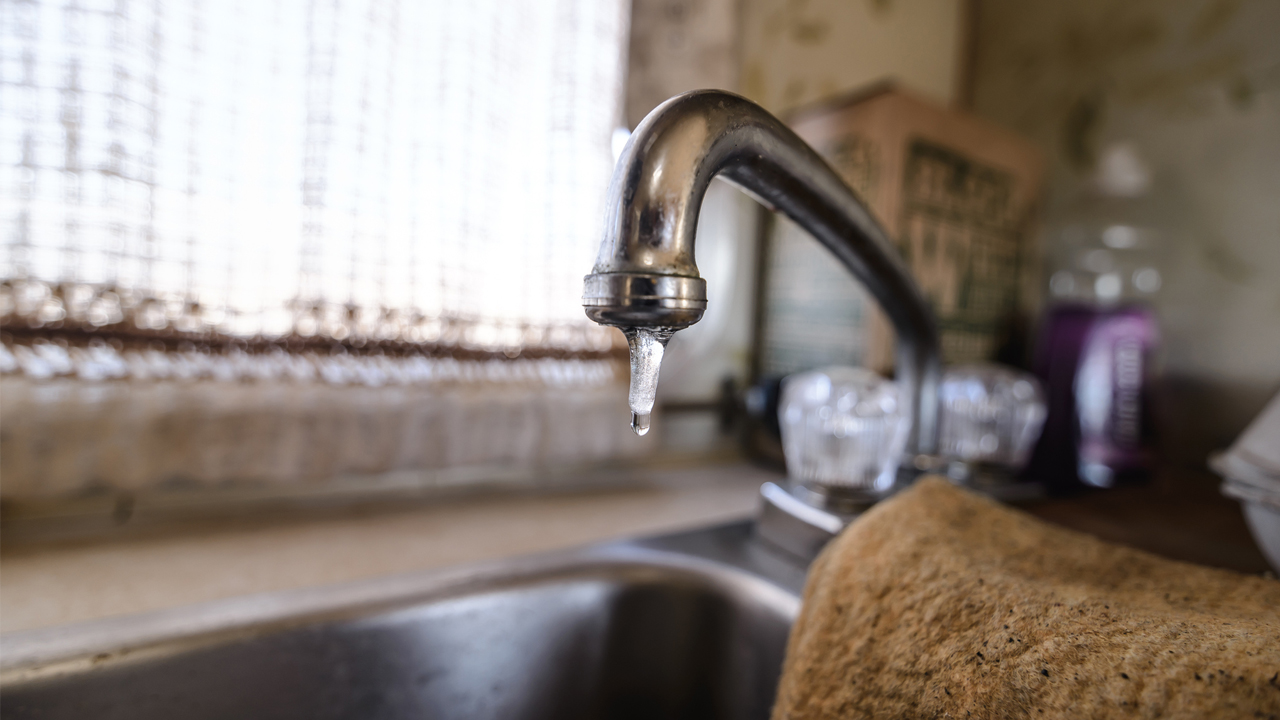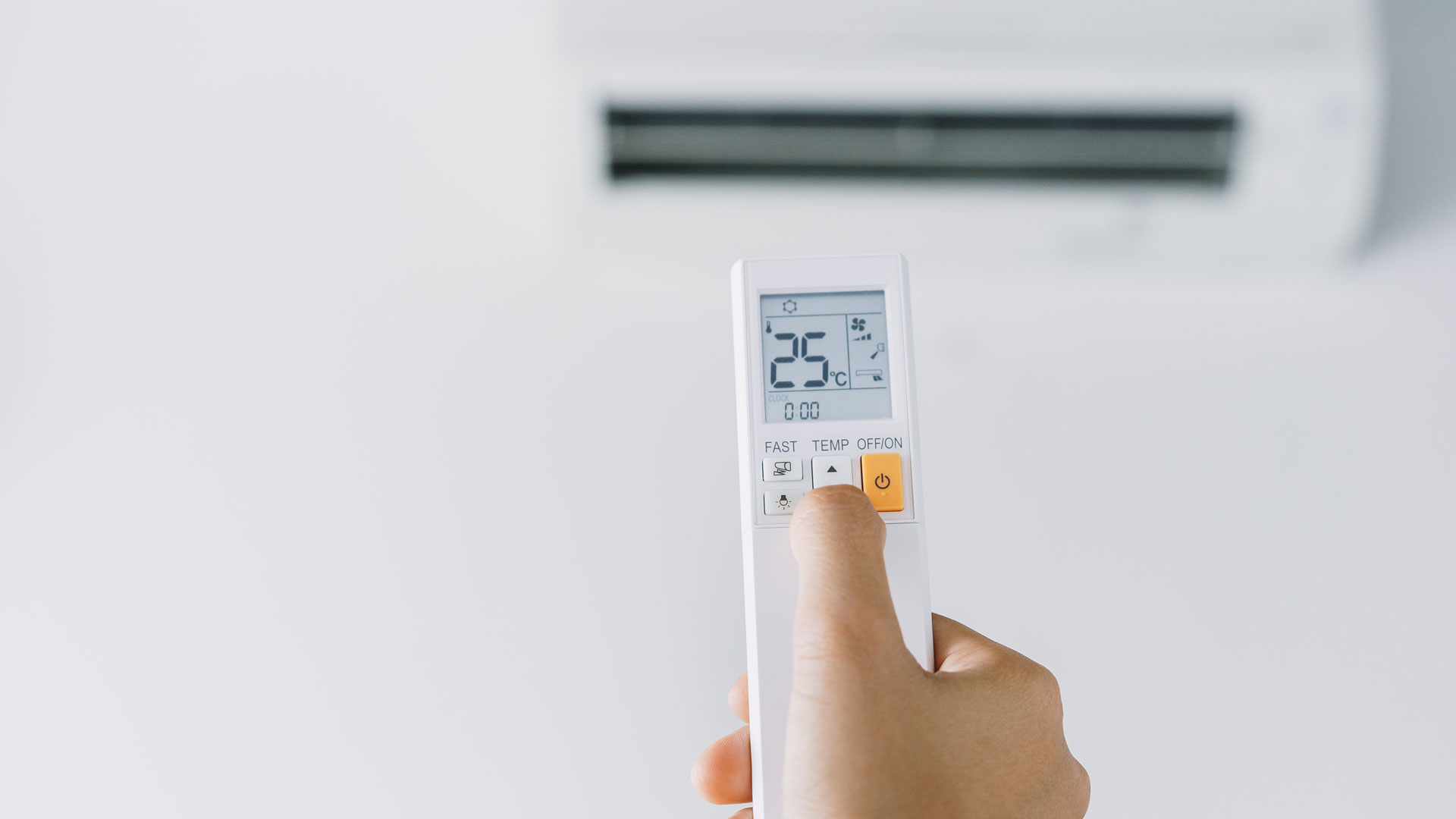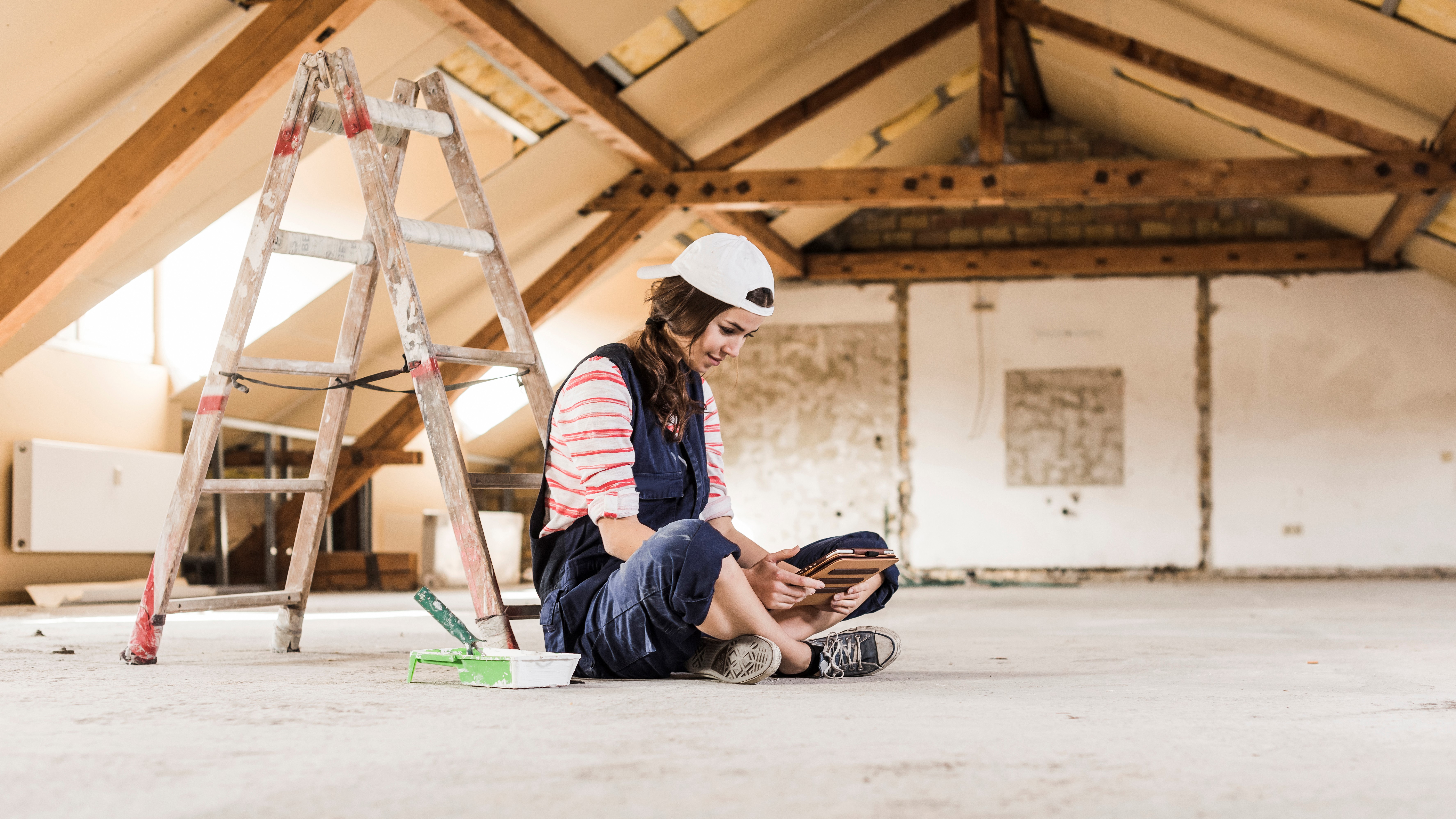How to prepare your home for winter
As the colder months approach, prepare your home for winter and reduce the risk of paying for expensive repairs with our step-by-step guide.

Fall officially starts on September 22, which means if you live in a colder climate, it’s time to get your home ready for the cooler months. Preparing your home for winter, in advance, will help reduce the risk of weather damage to your property and the need to pay out for expensive repairs. It could also help prevent claims on your homeowners insurance.
There are a number of steps you can take to get your home in top shape, some of which you can do yourself and others that will need to be handled by a professional. However, even if you pay a little now, you could be saving $1000s in the next few months by taking a few simple precautions.
Outside maintenance
Clean your gutters and cut back trees
One of the first steps is to get up on a ladder and clean out the gutters. “Gutters should be cleaned twice a year to prevent damage to your roof and foundation,” explains Chris Counahan, President of LeafFilter. “If [they] are not cleaned regularly and water overflows from the gutters, it can fall along the foundation of your home, freeze, and result in cracks.”
To avoid dealing with the tedious task year-round, Counahan recommends a more permanent solution such as gutter protectors. These can prevent debris from clogging up the gutters and can be purchased from most hardware stores and online. Costs can vary from around $1,000 for simpler jobs, to $6,000 for high-end professional installations.
Additionally, if there are trees that overhang your house, it is well worth cutting away some of the branches. As well as preventing leaves from falling into the gutters, it will also reduce the risk of damage to your property in the event of bad weather. Professional removal of branches and trees can cost from $200 to $2,000, according to Realtor Kristina Morales.

Winterize outside water sources
Sign up to receive the latest news, reviews, buying guides and deals direct to your inbox
Another major issue for homeowners in the winter is burst pipes, says Counahan, since the freeze and thaw of water left in exterior pipes causes them to weaken.
“Before the first freeze of the season, winterize any sprinkler system and other outside water sources by bleeding the lines of any remaining water,” he advises. “Even in the cold, leaking and burst pipes can lead to water damage and mold problems.” If you're worried that you already have a fungal problem, we have a guide to the best mold test kits to confirm it.
Calling in a professional to drain your sprinkler system is usually the best option and will set you back around $50 to $150. However, if you want to tackle the task yourself, make sure you check the manufacturer’s website carefully as directions will vary depending on the system.
Any dripping or leaking faucets outside your home should be fixed as soon as possible, says Doyle James, President of Mr Rooter Plumbing. “When an outside faucet drips during freezing temperatures the water can turn to ice and block the flow of the water,” he explains. “This water then pools inside of the pipe and will eventually freeze, causing the pipe to expand and break.”
Additional tasks include removing hoses from outside faucets and insulating exterior faucets and outdoor pipes. It’s also a good idea to locate the main water shut-off valve so that you will be able to turn it off in an emergency. If it’s not in your basement or crawlspace, in the garage or near the water heater, it will be outside – usually underground near the street.

Protect your home against storms
Winter storms can cause substantial damage to properties and repair costs can be several thousands of dollars. To protect your home as much as possible, check the roof for damaged, loose, or missing shingles and repair as soon as you are able to.
Pay close attention to doors and windows too. “Ensuring doors and windows are properly sealed can easily prevent unwanted water from entering your home,” explains Matt Barresi, President of Leaf Home Enhancements. “Now is also the time to put any storm window and doors back in to keep out the cold air.”
Barresi also recommends replacing old window screens. “In the case of high winds, you don’t want ice or debris sneaking through cracks in your window screens. Checking your screens for little holes and replacing them proactively allows you to minimize the risk of insects or animals making the holes bigger.”
Filling in weak cracks in walls, floors and foundations will also prevent water from sneaking through when snow melts, adds Dallas Nevill, owner of Rainbow International Restoration. “This simple preventative measure can also be the difference to help prevent heat from escaping your home.”
Check, too, that handrails are in good repair and that you’re ready to de-ice sidewalks and stairs in the event of snowfall, and restock on essentials such as salt or ice melt – don’t wait until the first storm hits to do this.

Maintain your pool
If you own a pool, you’ll want to close it for the colder months, but it is important not to do this too early. “Pool water needs to be consistently below 65 degrees before closing for the winter,” says Kathryn Heg of pool and spa retailer Leslie’s. “Closing too soon can cause the sanitizer to be used up too quickly, which can increase the risk of algae growth.”
Ensure that your pool water is as clean as possible when you put on your cover and be sure to check the pump and filtration system. “Filters should be inspected and cleaned and water should be completely drained from your pump and filter system and/or any other equipment that contains water,” says Heg. You can do this yourself with a pressure pool cleaner.
When installing the winter pool cover, check it is clean and free of rips and repair if necessary. Once fitted, ensure it is secure and tightly sealed.
Indoor maintenance
As well as focusing on your property’s exterior, there are a number of jobs you’ll need to tackle inside the home.
Check heating and cooling systems
Before the colder weather hits, it is wise to schedule a home maintenance inspection. “Homeowners should schedule professional maintenance checks twice a year, once for heating and once for cooling,” says Lane Dixon, Vice President of Operations at Aire Serv. “Since systems can stay off for long periods of time before being used again, they should be inspected before they are turned on for winter.”
The air filter on your heating system should also be checked or replaced every 90 days, says Edward McFarlane, Strategic Advisor, Provider Experience at HomeX. “Test the heat on a mild day to check for any issues. An initial burning smell simply means dust is moving for the first time in a while.”
Other important steps include covering the top of your air conditioning unit, unless it’s a year-round heater, to keep it clear of leaves. This will help reduce the risk of damage and maximize air flow. Also flush the AC condensate trap and drain (or pump) with a mixture of vinegar and water to keep it clean as the seasons change, advises McFarlane.
If you have window air conditioning units, Dixon recommends removing them, covering them and placing them in somewhere like a garage for safe keeping. “Be sure to clean the vents and filter of the window unit before storing it,” he adds.
Additionally, if appliances such as washing machines and dishwashers are stored in an area of your home that may reach below freezing, consider winter-proofing these appliances with antifreeze, says Ron Shimek, President of Mr Appliance. “It’s best to use -50°F non-toxic antifreeze to protect the lines against freezing.”

Prepare your furnace
Fall is also a good time to make sure your gas furnace or boiler is operating as it should. An HVAC (heating, ventilation and air conditioning) contractor will also be able to replace the furnace filter which should ideally be done once a month.
“As the heating system circulates air, dust, pet dander, and other particles are built up on the filter,” explains Dixon. “These particles begin to block airflow and forces the furnace to work harder, ultimately raising your energy bill and causing long-term damage.”
Checking the fuel level is also important to ensure you do not run out. “If you heat with fuel oil or propane and see you are near a quarter tank level, call for a fuel delivery to fill it up. Tank gauges are not 100% precise and you could run out of fuel when you need it most,” says Dixon.
Additionally, make sure you test the burner flames. You want a steady blue color, so if you see orange or yellow flickering flames, you’ll need to call out a professional. Pay attention to strange noises or odors too.
“If you hear booming, clicking, squealing or other odd sounds, ask a professional for guidance. If you smell a rotten egg, this could indicate a natural gas leak. Exit your house immediately and call the fire department followed by an HVAC professional,” says Dixon.
Finally, don’t forget to check smoke detectors, fire alarms and carbon monoxide detectors and replace batteries to ensure they are operating correctly.

Add insulation
Fully insulating your home will help make your home more energy-efficient and ensure your home stays warm during the colder months. “There are a few great things you can use to help insulate the parameter of your doors and windows to help keep the cold air out,” says Brad Roberson, President of Glass Doctor. “You can purchase a variety of insulation materials at your local home improvement store based on your specific needs.”
Examples include Batt insulation (or Batt and Roll) and spray foam insulation, but you can also add caulk or weather stripping. “Both your doors and windows can be weather stripped to add protection from cold drafts, as they help seal air leaks around doors and windows,” says Roberson. “Caulk is an inexpensive way to seal windows for winter, but it goes a long way. Look for a high-quality brand that stays sealed.”
Buying a draft snake to go under your door and hanging thermal fabric curtains or cellular shades can also help to keep the cold out and the warm in.
But it’s not only windows and doors that need attention. Your attic can also be a significant cause of heat loss during winter. “If your house is older than 15 years, your attic insulation might need replacing,” says Morales. “That can cost around $1,500.”
Additionally, it is worth covering indoor faucets and exposed pipes with insulation to prevent them freezing. If you have reason to believe a pipe has frozen and it has not yet burst, James recommends trying to thaw it with a space heater, heating pad or a hair dryer.
He also advises opening under-sink cabinet doors. “These are typically located in your kitchen or bathroom. It’s important to keep warm room air circulating around pipes as it can help your home’s pipes from potentially freezing.”

Further tips and tricks to protect your home
- Change the direction of ceiling fans to clockwise - this pushes hot air across the ceiling and down to the floor.
- Install a programmatic thermostat that can connect to the WiFi so that you can set a desired temperature and program it for different times of the day. This can help you save money on your electric bill during the winter months. In fact, the US Department of Energy estimates that you could save 1% on your energy bill for each eight-hour period that you lower the thermostat by one degree.
- If you have a functioning fireplace, have the chimney inspected and cleaned on an annual basis. This will cost from $250 to $800.
- Inspect your window panes and replace any cracked or broken glass. Also check wooden window frames for any signs of damage.
- Stock up on wood for the fireplace, canned food, and bottled water in the event you lose power in a storm. Also ensure you have plenty of batteries, a radio and first-aid kit.
Rachel is a finance expert and regular contributor to Top Ten Reviews. She has crafted expert financial advice for the likes of The Spectator, Money Supermarket, Money to the Masses, and The Observer. She has written extensively about money-saving tips, and about how you can make the most of your finances in relation to loans, house buying, and other subjects.
